Quiet, efficient and emission-free, electric-assist vehicles are gradually transforming personal transportation in cities around the country.
Continual growth in the use of E-bikes (electric-assist bikes) and E-scooters (electric-assist scooters) are forcing federal, state and local governments to set rules on their use, including where they may be used, how fast they may go, who may use them, and required safety features. This overview is intended to help users, potential users, and local governments get more familiar with these new transportation options.
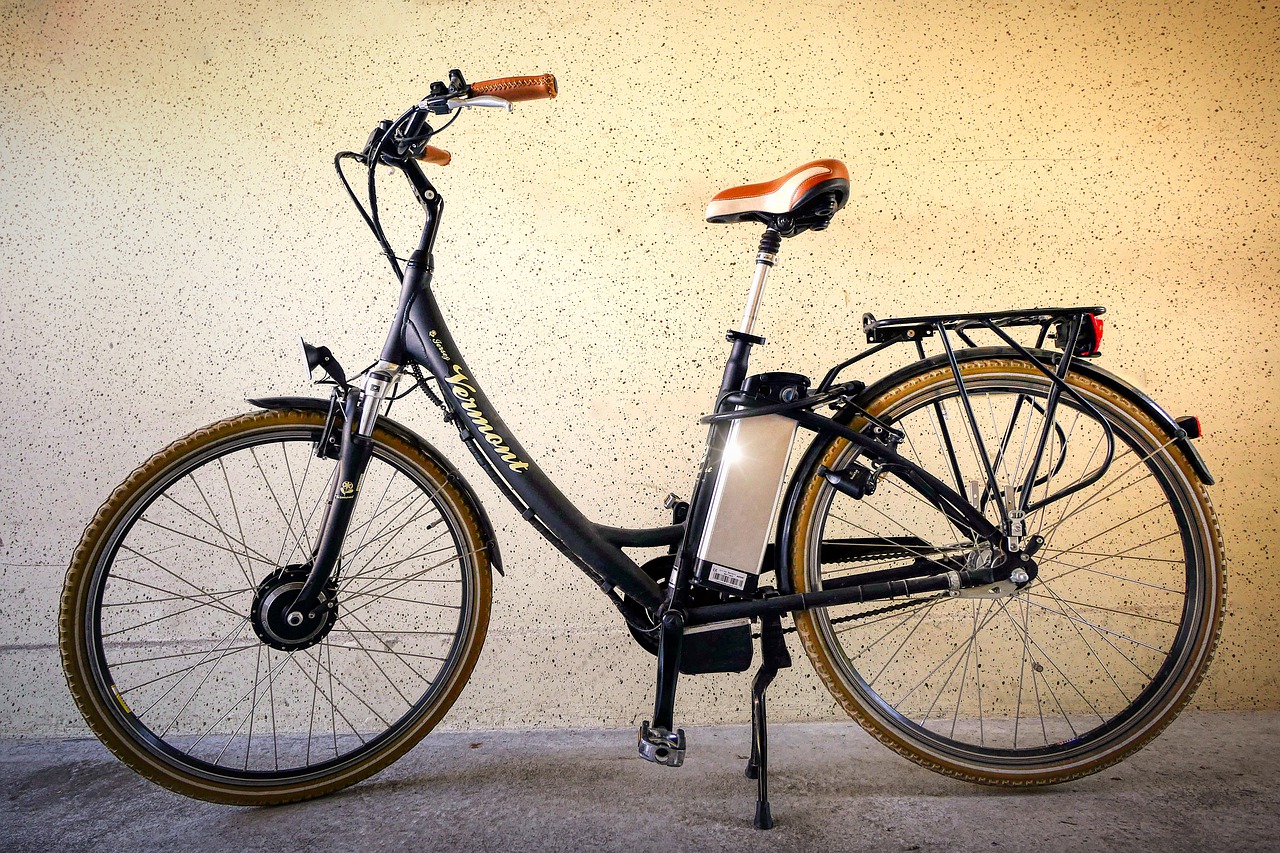
The E-bike Advantage
More and more Americans view bikes as a fundamental transportation option, cheaper in every way than a car, and in some instances, more convenient. But bike travel entirely on your own power can leave you in need of a change of clothes after your ride. E-bikes can extend the range, decrease the time, and improve the comfort of any ride, making biking a more attractive option for a wider variety of people and situations.
E-bike Definitions and Laws
The main concern with E-bikes is that the motor can enable greater speed than pedaling alone, or cause the bike to be operated differently than conventional bikes. A fast-moving bike is always a risk in places with a mix of users, such as parks and trails. Absent some sort of law, there could be endless variations of motorized power, from the slightest assist to a full-power motorcycle, and communities need to figure out how to keep everyone safe without outlawing all electric bikes.
The federal government addressed the question, “When is it still a bike?” in 2002. A Consumer Product Safety Commission rule clarified that an E-bike will be regulated like a bike that is solely human-powered if it meets the definition as “a two- or three-wheeled vehicle with fully operable pedals and an electric motor of less than 750 watts (1 h.p.), whose maximum speed on a paved level surface, when powered solely by such a motor while ridden by an operator who weighs 170 pounds, is less than 20 mph.”
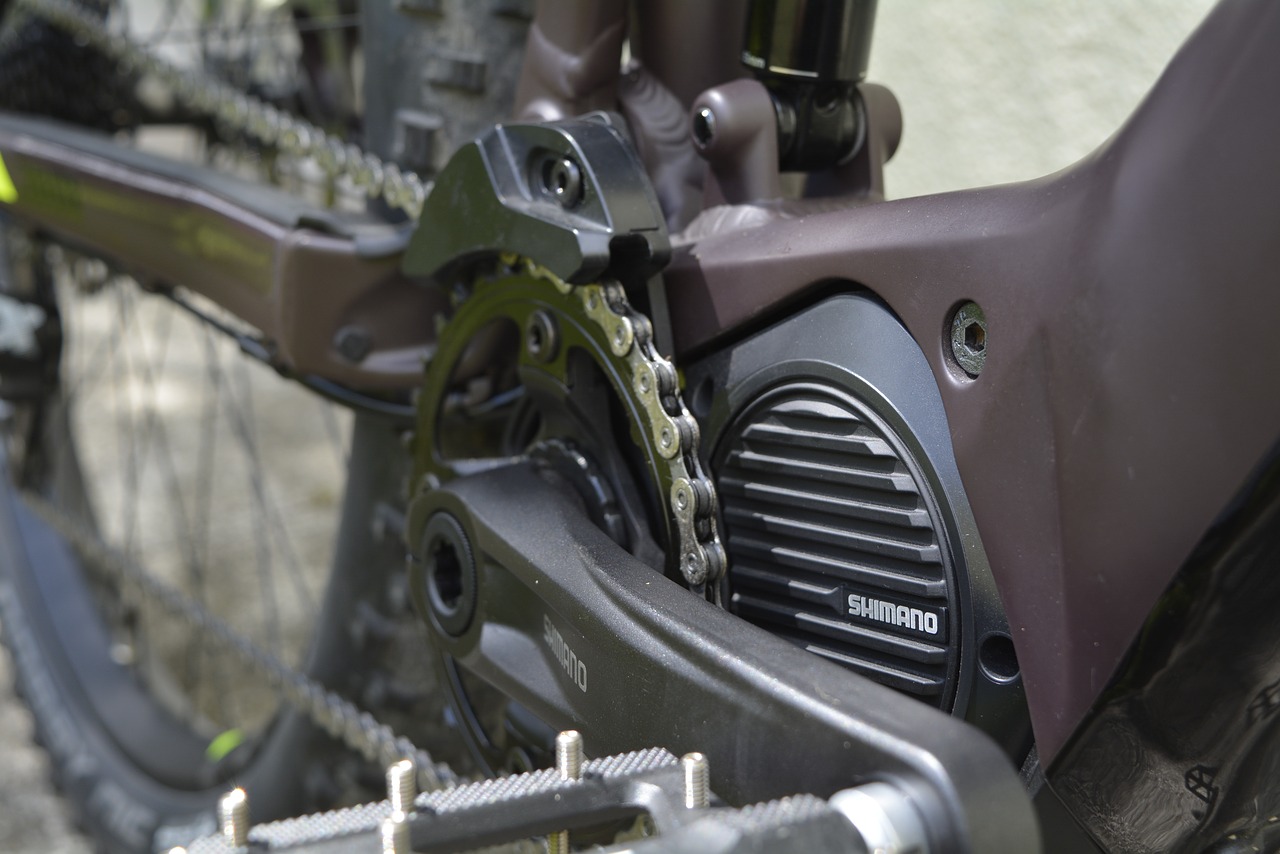
Most states have opted to enact more detailed rules than this, and many have stretched the definition too. According to an article published by the National Conference of State Legislatures on August 10, 2020, the District of Columbia and 43 states have laws in place pertaining to E-bikes and 26 of those have a three-tier classification system to differentiate between models with varying capabilities, typically following this pattern:
- A Class 1 electric bicycle is an electric bicycle equipped with a motor that provides assistance only when the rider is pedaling and that ceases to provide assistance when the bicycle reaches the speed of 20 miles per hour.
- A Class 2 electric bicycle is an electric bicycle that may be powered solely by the motor and is not capable of providing assistance when the bicycle reaches the speed of 20 miles per hour.
- A Class 3 electric bicycle is an electric bicycle equipped with a motor and speedometer that provides assistance only when the rider is pedaling and that ceases to provide assistance when the bicycle reaches the speed of 28 miles per hour.
There are variations of those definitions, and corresponding restrictions and safety requirements in each state. For example, the states of Wisconsin and Illinois require a speedometer and a minimum age of 16 for any Class 3 E-bike. Illinois requires speedometers on all E-bikes. Minnesota considers an E-bike still a bike up to 1000 watts of power, but also restricts use for any E-bike to ages 15 and up.
Also common in many states is a patchwork of local regulations regarding bike trails. The state rules generally allow E-bikes wherever regular bikes are allowed on city streets, but let local jurisdictions decide if they may be used on local off-street trails. Knowing where and how you can use an E-bike in your community usually requires a check for both local and state rules.
E-bike Infrastructure
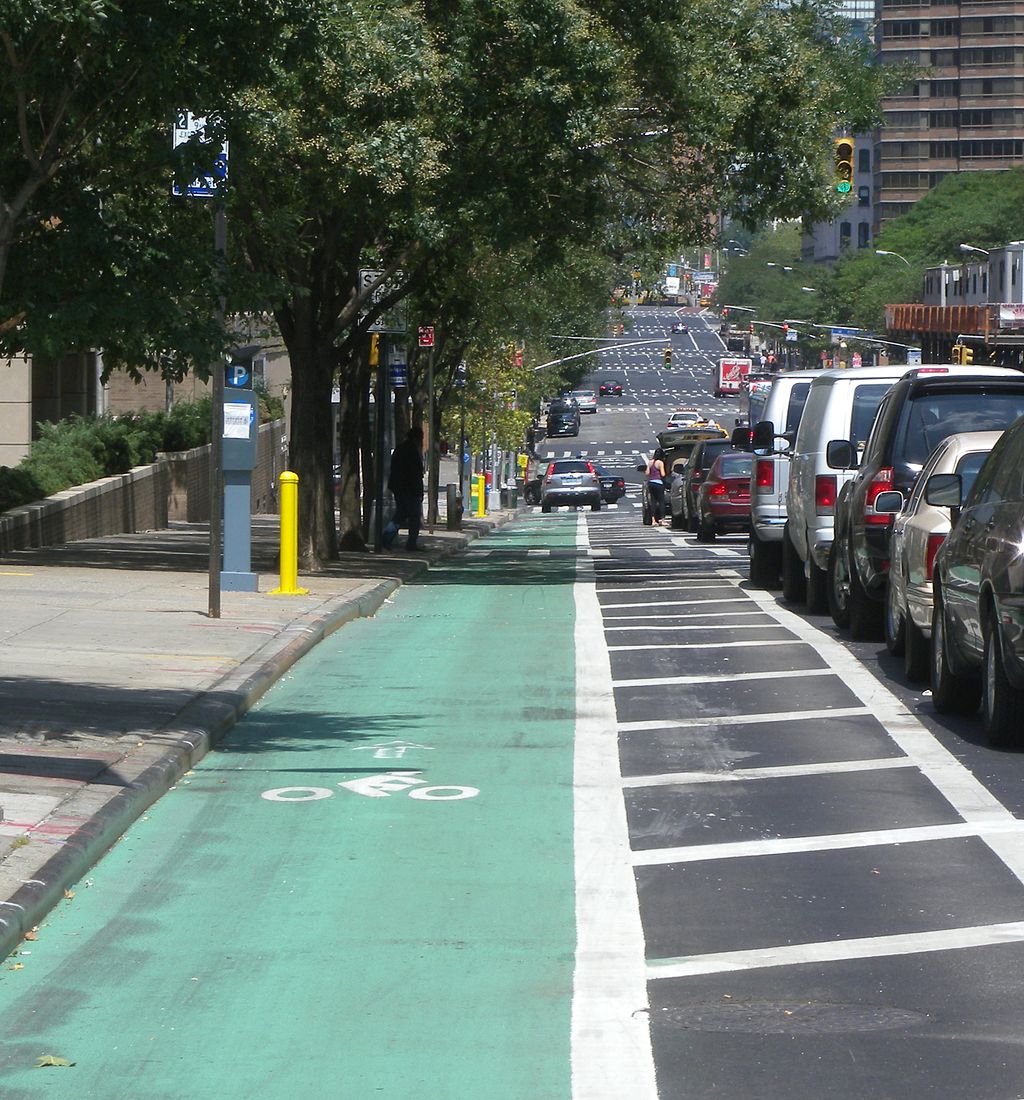
E-bikes don’t really need their own infrastructure. But, they are increasing demand for urban bike infrastructure of all types, including:
Dedicated Bike Lanes – communities are finding ways to make safe spaces for bikes in many critical transportation corridors, and often without widening the roadway. By narrowing or eliminating underutilized drive lanes (AKA a “road diet”) or eliminating a lane of parking, bikers can be offered a much safer travel zone.
Intersection Improvements – bike safety requires smart intersection design, including striping that clarifies the interaction between bikers and drivers in turn lanes. On frequent-use bike routes, bike boxes are encouraged at traffic signals – those bright green zones at the front of the queue – to give bike riders the full land width and time to get up to speed when the light turns green.
Designated Shared Spaces – where bike lanes are not feasible in a primary corridor, an alternative option is often the use of low-volume side streets. But, rather than striping separate lanes on narrower streets with high parking demand, bikes can be encouraged to use the full travel lane. These are often called “bike boulevards” and are sometimes marked with a series of “sharrows.”
Parking – designated bike parking is a critical feature too often overlooked in zoning codes and development approvals. Retail, office, and multi-unit residential developments all need bike racks for the same reason that they typically need parking lots for cars. The development process is also an opportunity to encourage indoor bike parking and storage, which offer greater security and protection from the weather.
Charging Stations – this is the one type of new infrastructure needed specific to E-bikes. Just as electric cars are leading to the installation of charging stations, so too are E-bikes. Most e-bikes require just a conventional 110V connection to charge, but the best way to offer that is with specially designed racks wherever bike parking is provided.
The E-scooter and E-skateboard Conundrum
Whereas the E-bike is just a slight variation on the regular bike, E-scooters and E-skateboards are a novel mode of transportation for most adults. E-scooters have been big news in larger American cities in the past three years or so due to companies making them available throughout downtown areas. Initially without regulation, and more recently with city oversight, scooter companies such as Lime, Bird and Bolt allow users to pick up a scooter on the sidewalk and rent it by the minute, typically for short, downtown trips.
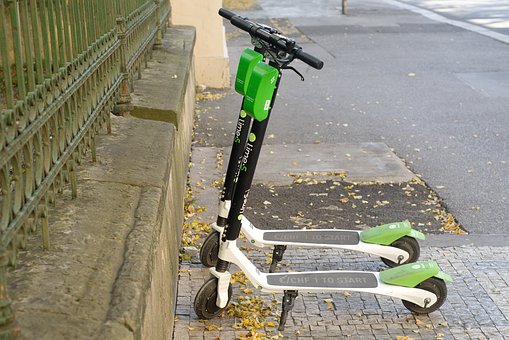
E-skateboards are less common than E-scooters, and have not been offered as ubiquitous, short-term rentals. Some of them look like regular skateboards, but longer and thicker (the motor is under the board), while others feature just a single, large, rubber tire and the user stands with one foot in front and one foot behind that tire.
The conundrum with E-scooters and E-skateboards is deciding where they may be safely used. Traditional scooters and skateboards are considered play devices in most jurisdictions and are allowed on sidewalks but not in the street. The electric variety is too fast for safe use on sidewalks, but there have been concerns about allowing them to be on the street, as they are typically slower than E-bikes.
The State of Minnesota, for example, has responded to the growth in E-scooters, AKA “motorized foot scooters,” with state law that treats them mostly like bicycles, except that users must be 12 or older, helmets are required under age 18, and there are detailed rules about riding close to the curb and making left turns at a pedestrian crossing. Other states, such as Wisconsin, have E-scooter laws with fewer details, while many states still have no clear regulation.
E-skateboards, though functionally similar to E-scooters, are thus far much less common and also rarely addressed in state statutes. They are still considered toys in most places.
Calculating Traffic and Community Readiness
So, how does a community know when it’s time to give their bicycling infrastructure a boost? Performing a bicycle, E-bike, E-scooter and E-skateboard count might be a good place to start. This can be done through installing counters on trails or bike lanes, or utilizing video or motion-sensor cameras for a traffic impact analysis. A citizen survey can also help solicit feedback from the user base. Assessing where use overlaps, where safety concerns exist or what travel corridors see the heaviest electric device traffic can help communities plan for street and trail upgrades and establish local the rules and regulations to accompany them. While public transportation is still an essential component of a healthy travel network, creating an established bicycling infrastructure provides citizens with different modes of choice. And, the means to decrease road congestion, lower carbon emissions and promote healthy livability as well.
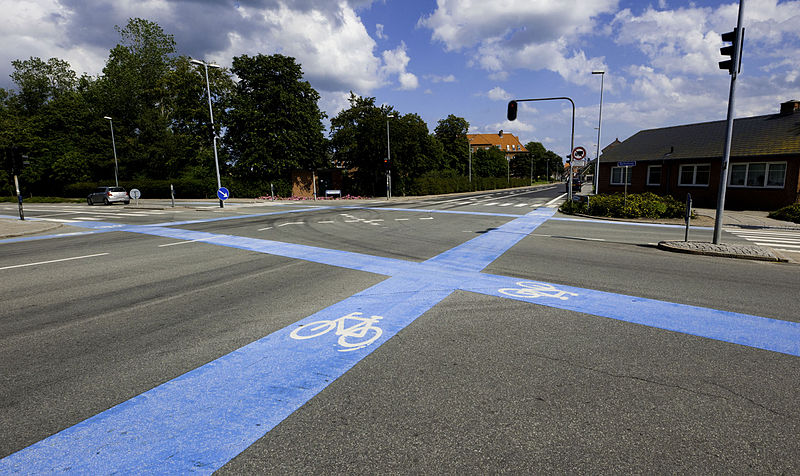
Bike crossing lanes are clearly identified at this intersection in Denmark. Image courtesy of Wikimedia Commons, User Heb.
Planning and Engineering for Electric-Assist Vehicles
Many communities have an Active Transportation Plan to facilitate more walking and biking for transportation throughout the community. Electric-assist vehicles are appropriately addressed within such a plan. Whether looking at all forms of active transportation, or if you prefer to focus on just electric-assist vehicles, the “6 E’s” of active transportation planning offer a useful framework to organize your approach:
Evaluation and Planning – this can include community surveys, discussions with interest groups, multimodal traffic counts, and creating plan documents.
Education – most people still know very little about the safe and legal use of electric-assist vehicles; public outreach and education efforts can change that.
Enforcement – a safe transportation network needs laws and enforcement to guide behavior. Local law enforcement efforts are critical to maintaining safety for all users, especially those that lack the protection of a large vehicle.
Encouragement – if your community wants to see more of these transportation options in use, encouraging people to try them makes a difference.
Engineering – active transportation needs infrastructure, and infrastructure needs engineering, from main street reconstruction to bike path design to intersection upgrades and more.
Equity – each of the other 5 E’s should be conducted with an equity lens, considering how to ensure that the active transportation network is safe and available to everyone in the community, and is addressing the needs of low-income residents, people of color, children, people with disabilities, and older adults.
Ready to get started? MSA’s planning and traffic engineering professionals can help get things rolling.

